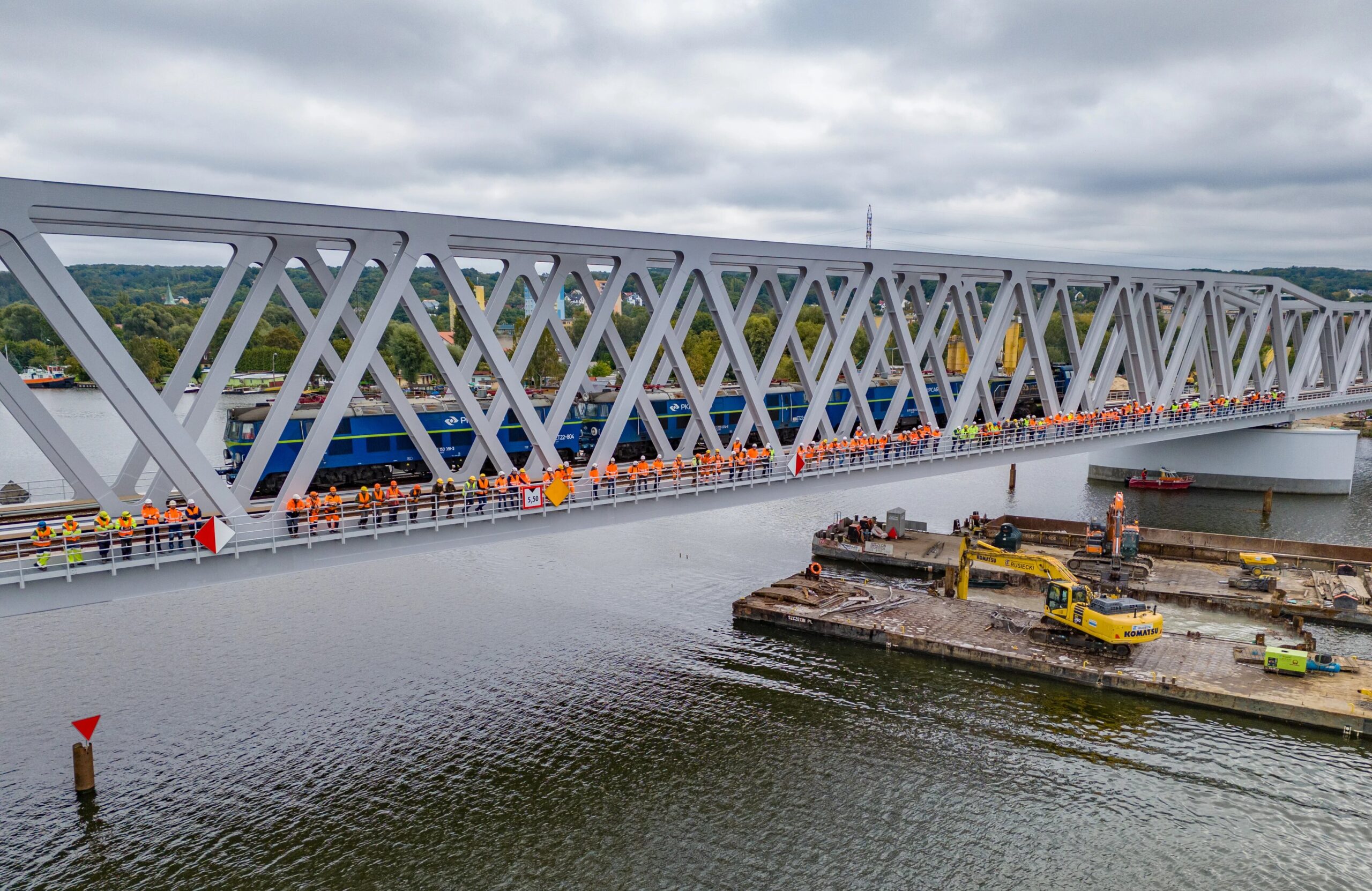Contact us!
Contact information for the person responsible for the communication
Menu
About us
Offer
Electromobility
Foreign markets
We are reaching out further and further. We are making strategic investments outside Poland.
News
Contractors
Investor relations
ESG
Safety
This is our priority and our common good. We are committed to ensuring that our employees and partners, once the work is completed, return home safely.
Media
About everything we do.
On a regular basis.
Find in media:
24.10.2023

Budimex has successfully completed test loads on the viaduct and railway bridge over the Regalica River. The value of the investment carried out for the State Water Holding Polish Waters Regional Water Management Authority in Szczecin and PKP PLK SA is approx. PLN 282 million net. In November, it is planned to submit an application for an occupancy permit. The aim of the investment is to increase the freedom of inland navigation while ensuring the continuity of rail traffic on line No. 273.
The contract for the implementation of the project in the “build” formula was concluded in September 2021 between Budimex SA and Polish Waters. The project is financed by the World Bank, the European Union and the state budget.
- We are approaching the end of our investment. The new bridge connecting the two banks of the Regalica River is over 2800 tons of steel and 10,000 elements. The old bridge has been demolished and is no longer an obstacle to navigation. 2 new tracks were built for speeds of over 100 km/h. The facility with a total length of 276 m and a height above the high navigable water level of 6.2 m will enable the free passage of vessels, including icebreakers located in the nearby base. The scope of the investment also includes the reconstruction of 12 km of tracks and the construction of a new platform. Over 2000 people were involved in the construction site carried out jointly by the infrastructure construction, railway construction Budimex SA and Mostostal Kraków – says Sławomir Krekora, Contract Director of Budimex SA.
During the load tests, four locomotives with a total weight of 480 tons were used for static loads and a locomotive with a weight of 120 tons for the dynamic test. The speed of the vehicles in the trials was gradually increased from 10 km/h to over 100 km/h, reaching the maximum operating speed. The analysis of the bridge structure during the load tests included:
Currently, the ongoing works related to the laying of the track surface and the construction of the overhead contact line are nearing completion. In addition, key stages of works related to the construction of retaining walls of the railway embankment and a road viaduct have been completed, which will enable collision-free passage of ul. Szklana Street under the railway line 273 Szczecin – Wrocław. A new signal box building was also put into use, in which a computer rail traffic control system was launched at the station.
In the coming month, it is planned to submit an application for an occupancy permit, thus completing the next stage of this project.

Contact information for the person responsible for the communication

Budimex spokesperson